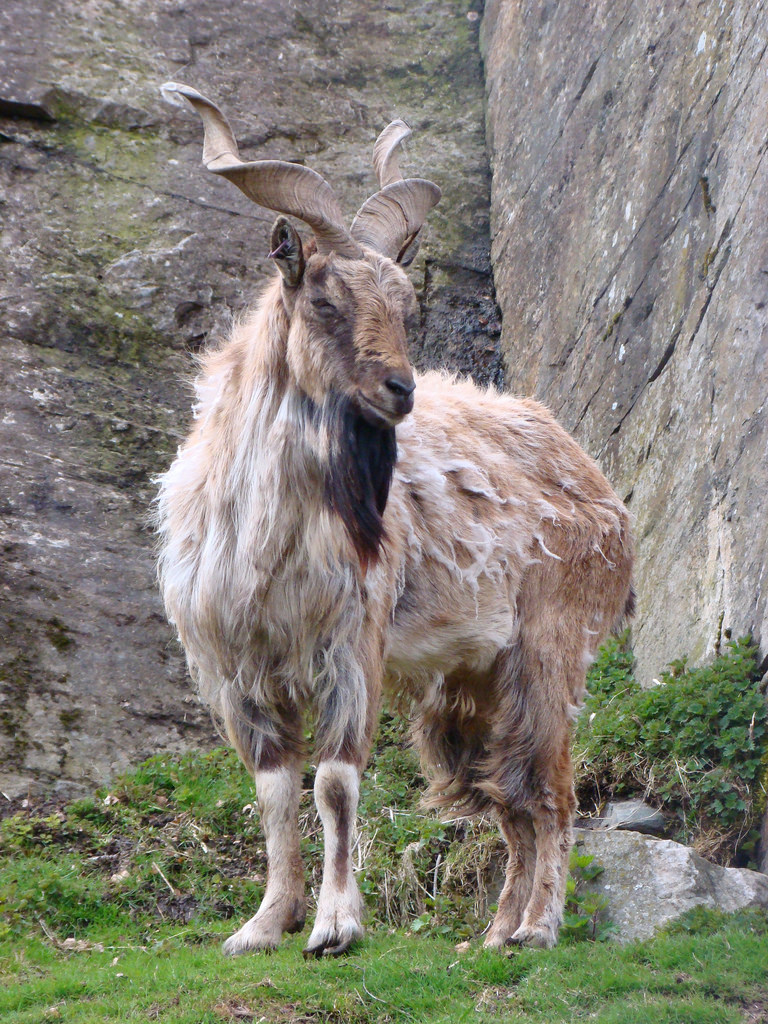 |
| Markhor |
Description and biology
The markhor is one of the largest members of the goat family. An average markhor has a head and body length of 55 to 70 inches (140 to 195 centimeters) and a shoulder heightof 26 to 40 inches (66 to 102 centimeters).
Its tail measures 3 to 5.5 inches (8 to 14 centimeters). The animal may weigh between 70 and 240 pounds (30 and 110 kilograms). Males are substantially larger than females.
Male markhors have unique corkscrew–shaped horns that are very thick and heavy. They also have a large beard and a long, shaggy mane at the base of their neck. If a female has a beard, which is rare, it is small. The coat of both sexes varies in length and color with the seasons. In summer, a markhor’s coat is short and reddish brown. In winter, it is long, silky, and gray.
  |
Markhors are active during the day, grazing on grasses and herbs or browsing (feeding on the tender shoots, twigs, and leaves) on shrubs and low trees. Wolves, leopards, and snow leopards often prey on the markhor.
Males generally live by themselves, while females and young live in groups of 10 to 12. During the winter mating season, males compete with each other over the right to mate with females. After a gestation (pregnancy) period of about 155 days, a female markhor gives birth to one or two young.
Habitat and current distribution
Markhors inhabit rocky areas, open forested slopes, and meadows in the rugged mountains of central Asia. Their range extends from the western end of the Himalayas in north-western India to southern Tajikistan and Uzbekistan.
There are three subspecies of the markhor: the Kabal markhor (Capra falconeri megaceros), the straight–horned markhor (Capra falconeri jerdoni), and the Tajik markhor (Capra falconeri heptneri).
Kabal and straight–horn markhors are found primarily in Afghanistan and Pakistan. Tajik markhors occupy southern Uzbekistan and Tajikistan. With population numbers ranging from 700 to just over 3,000, all three subspecies are in danger of extinction.
History and conservation measures
Excessive hunting, primarily for the markhor’s horns, is the main reason for the animal’s decline. As the human population increases in the markhor’s range, so does the destruction of its habitat. Trees are cut down for timber, forested land is cleared to create agricultural land, and domestic sheep and goats compete with the markhor for food.
Twenty–seven protected areas have been established in the markhor’s range. The level of safety in these areas, however, is limited by political unrest and military activity in the region. In addition, most markhor populations are very small and often isolated from each other, making conservation efforts difficult.
